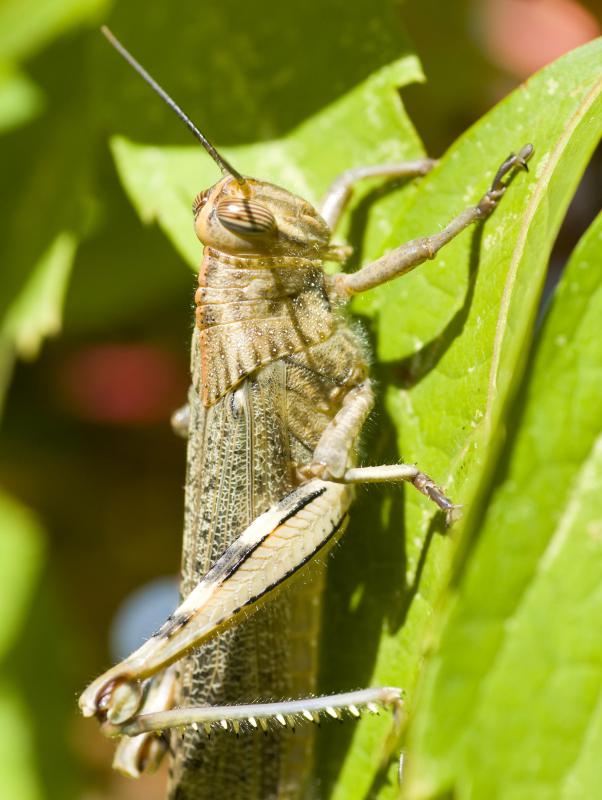At AllThingsNature, we're committed to delivering accurate, trustworthy information. Our expert-authored content is rigorously fact-checked and sourced from credible authorities. Discover how we uphold the highest standards in providing you with reliable knowledge.
Why do Some Animals Migrate?
Animals migrate to reproduce, eat, or seek warmer climates. Those that migrate travel long distances in groups from one part of the world to another, past oceans, over plains, or through the sky on a decided route. Some species must travel thousands of miles every year, while others make the trip just once in their lifetime.
Warmer weather often means a larger or better food source. Animals, like geese, who spend spring and summer in the cool northern hemisphere, move south for the winter on a seasonal schedule. They follow the same path from year to year, often stopping at the same landmarks. Herbivorous mammals, like African antelope, follow green grass depending on precipitation and drought. Their yearly travel patterns might not be along the same path, depending on the weather and their feeding. Those wanderers, called "nomadic migrators," include the behavior of massive plagues like locusts. Generally, though, animals travel closer to the warmer equatorial zone and away from the poles during winter.

Another cycle that triggers migration is mating, gestation, birth, and raising young. Some animals, like Pacific trout, make one long migration over the course of their lives. From small streams, they travel to open waters to mature, then return to their birthplace when they are ready to spawn. The ideal location for an animal's reproduction might have a special food source, less predators, or a geographical feature necessary for new life. Tortoises must have soft, sandy beaches to bury their leathery eggs. Frogs need low, leafy branches to overhang ponds not in danger of drying up too soon.

Migration takes an enormous amount of energy. Leading up to the long trip, animals build up fat for stored energy, or pare down weight for easier movement. Hormonal chemicals trigger these changes. In animals equipped to navigate long distances, the position of the sun and stars in the sky, water currents, temperature, wind conditions, and their "biological clock" help them reach the appropriate destination.
Frequently Asked Questions
What are the primary reasons animals migrate?

Animals migrate primarily for survival. They move to find food, suitable climates, or safe breeding grounds. For instance, the Arctic tern migrates from the Arctic to the Antarctic to access abundant food sources and favorable weather, covering a staggering 25,000 miles annually, according to the British Trust for Ornithology.
How do animals know when and where to migrate?
Animals use a combination of environmental cues, such as temperature and daylight changes, and biological instincts to determine migration timing and direction. Some species, like the monarch butterfly, are believed to use the Earth's magnetic field and the position of the sun to navigate across continents, as reported by the National Geographic Society.
Which animal undertakes the longest migration?
The humpback whale is known for one of the longest mammalian migrations, traveling up to 16,000 miles round-trip between feeding and breeding grounds. However, the Arctic tern holds the record for the longest migration of any animal, flying about 25,000 miles each year from pole to pole, as documented by ornithological research.
Do all animals migrate in large groups?
Not all animals migrate in large groups. While some species, like the wildebeest, travel in massive herds for protection and social interaction during their migration across the Serengeti, others, such as solitary predators or certain bird species, may migrate alone or in small family units for better maneuverability and resource allocation.
Can climate change affect animal migration patterns?
Climate change significantly impacts animal migration patterns. Altered temperatures and weather conditions can shift the availability of resources, prompting earlier or later migrations. For example, studies have shown that some bird species are migrating earlier in the spring due to warmer temperatures, potentially disrupting ecological balances, as indicated by the Audubon Society's climate research.
What is the role of conservation in protecting migratory species?
Conservation plays a crucial role in protecting migratory species by preserving critical habitats along migration routes and breeding grounds. International cooperation is essential, as these species cross multiple borders. Initiatives like the Convention on Migratory Species aim to safeguard these animals by promoting global conservation policies and actions.
AS FEATURED ON:
AS FEATURED ON:













Discussion Comments
Where can I find info on tectonic plate movement and migration patterns? Isn't one theory of migration patterns for some animals the movement of tectonic plate?
@momothree: Probably the most common North American migrator is the bird. There are over 100 species of birds that completely leave the U.S. every winter and migrate in the West Indies or Latin America.
Bird migration is a very fascinating thing to watch.
@momothree: I think that one of the most fascinating migrators is the monarch butterfly. Every fall, these butterflies migrate to warmer climates. In temperatures below 55 degrees, it is impossible for them to fly so they must migrate.
Almost 100 million monarch butterflies migrate to either California or Mexico every year.
What North American animals migrate?
Post your comments